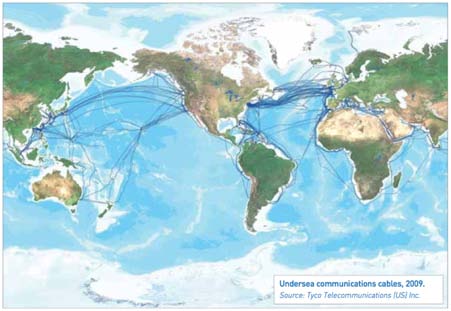
Background
ICPC is the International Cable Protection Committee. It maintains a database on all of the submarine cables in the world.
These were originally telephony cables, and now they are millions of kilometres of fibre optic cables for telecommunications, carrying global internet traffic.
They cross (under) the oceans of the world. They carry 95% of internet traffic across oceans; satellites carry the other 5% and they do it slower and more expensively.
There are about 200 serious faults a year. It is quite clear that the fibre-optic cable network has strong socio-economic and security implications. Hence, improving knowledge of the factors affecting the integrity of the cables is high on the agenda.
Database
The database proposed for analysis is held on a strictly confidential basis by the ICPC (https://www.iscpc.org/) It is based on reports of cable repairs undertaken by Maintenance Authorities, which carry out this work for various owners and operators of cables. This raises an important point in that the so called global submarine fibre-optic network is in fact a collection of individually owned, fibre-optic systems in much the same way that the international air travel network is a group of individually owned airlines.
Currently, the database contains information on ~1400 cable faults that goes back around 7 years.
The database grows by ~ 200 faults per year worldwide.
There is a range of information for each fault that includes time and date fault occurred; time taken for repair; potential cause of the fault etc.
In all, approximately 9 variables are recorded, some of it textual.
Marine maintenance in the zones a global comparison of repair commencement times
The over-arching question that the Study Group should tackle is: has the database been used to its full potential and what can be done to realise that potential.
Are there any useful patterns in faults and repairs that can be extracted from the database, and leveraged to help with future planning and strategies for the structural health of the cable network?
